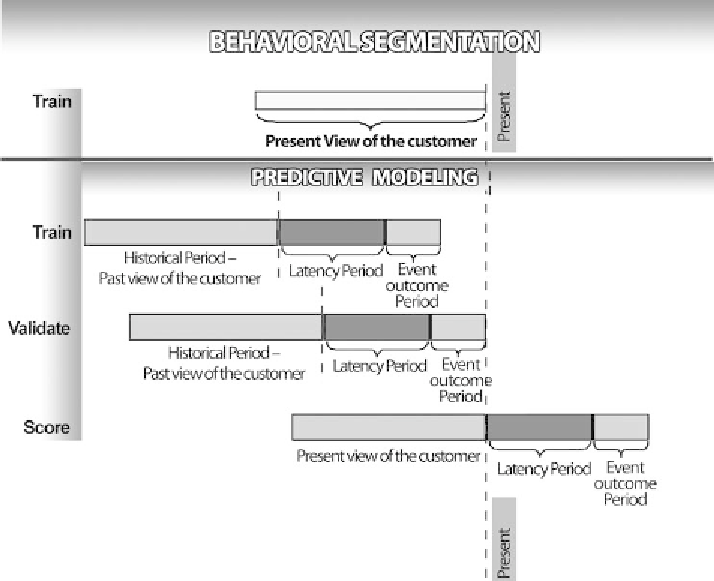Database Reference
In-Depth Information
Figure 4.1
Data setup of behavioral segmentation and predictive models.
3.
Event outcome period:
Used for recording the event outcome, for example,
churned within this period or not. It follows the historical and latency periods
and is used to define the output field of the supervised model.
The model is trained by associating input data patterns of the historical period
to specific event outcomes recorded in the event outcome period.
Typically, in the validation phase, the model's predictive performance is eval-
uated in a disjoint dataset which covers different time periods. In the deployment
phase new cases are scored according to their present view, specifically, according
to the input data patterns observed in the period just before the present. The
event outcome is unknown and its future value is predicted. The whole setup is
illustrated in Figure 4.1.
Therefore, a mining data mart designed to address advanced analytical needs,
and predictive modeling in particular, should incorporate enough past data to
model the changes of the customer view over different time periods.

Search WWH ::

Custom Search